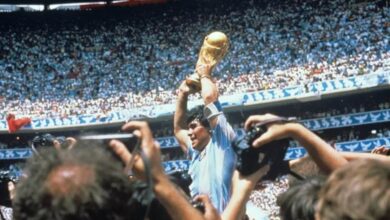Legendary South American and Mexican Goalkeepers

South American soccer has always been synonymous with flair, and its goalkeepers are no exception. Known for their daring styles and larger-than-life personalities, these goalkeepers have left an indelible mark on the sport.
Goalkeeping in South America has always been an art form. The most memorable figures are fondly known for their nicknames, like ‘The Madman,’ ‘The Cat,’ or ‘The Bulldog.’ And for decades, the Copa America has been a showcase tournament for the continent’s boldest goalkeeping personalities, whose influence has not only shaped the game on the continent but also influenced the global soccer landscape.
South America is a continent of diverse soccer cultures, and this diversity is reflected in the goalkeeping styles. Only some countries are known for producing eccentric goalkeepers. Nations like Uruguay, Ecuador, Venezuela, and Chile have traditionally produced keepers who may have yet to stand out for their flair or sense of adventure. Other countries, however, are home to some of the game’s trailblazers.
Argentina’s Goalkeeping Giants
Argentina, the current world champions and holders of the Copa America, boasts one of the most polarizing goalkeepers in the world, Emiliano Martinez. Nicknamed ‘El Dibu,’ the brash Martinez has made a name for himself with his shot-stopping prowess and his heroics in penalty shootouts. His confident presence and bold demeanor have made him a key figure for the Albiceleste.
The legacy of Argentine goalkeepers is long and storied. The late Amadeo Carrizo is credited with revolutionizing the position by becoming the first “sweeper-keeper.” Carrizo, who played over 600 matches for River Plate before retiring in 1970, inspired future generations with his proactive style. One such goalkeeper was Hugo Gatti, also known as “El Loco” for his daring runs out of the penalty area and his flamboyant personality.
Gatti represented Argentina in the 1975 Copa America, and his influence paved the way for future greats like Nery Pumpido. Pumpido, a hard-nosed goalkeeper, was the starter for Argentina when they won the 1986 World Cup. His unfortunate injury during the 1990 World Cup allowed Sergio Goycochea to step in and become a national hero with his penalty shootout performances.
Goycochea went on to win the Copa America titles in 1991 and 1993, cementing his place in Argentina’s goalkeeping lore. Today, he remains a prominent figure in Argentine soccer as a television analyst and motivational speaker. Martinez, with his eye on a second consecutive Copa America trophy, hopes to follow in the footsteps of these legends.
Brazil’s Goalkeeping Renaissance
For years, Brazilian soccer was synonymous with attacking flair rather than goalkeeping excellence. However, that perception has changed dramatically in recent times. Today, Brazil boasts two of the world’s best goalkeepers: Liverpool’s Alisson and Manchester City’s Ederson. Their performances in the Premier League and international competitions have redefined the expectations for Brazilian goalkeepers.
The evolution of Brazilian goalkeepers can be traced back to iconic figures like Julio Cesar, who led Brazil to a Copa America victory in 2004. Sao Paulo’s Zetti and Rogerio Ceni also made significant contributions to the position. Zetti was known for his acrobatic saves, while Ceni’s prowess as a set-piece specialist made him one of the most unique goalkeepers in history, scoring 131 goals in his career.
Dida, a towering presence and an AC Milan legend, broke barriers as Brazil’s first Black No. 1 goalkeeper since 1950. His performances in the 1999 Copa America and the 2002 World Cup solidified his status as a Brazilian great. Claudio Taffarel, another legendary figure, was the hero of Brazil’s 1994 World Cup triumph, showcasing the consistency and professionalism that have become hallmarks of Brazilian goalkeepers.
Colombia’s Legendary Keepers
Colombia’s Rene Higuita is perhaps the most iconic and unconventional goalkeeper the world has ever seen. Known as “El Loco” for his wild hair, eccentric personality, and adventurous style, Higuita revolutionized the role with his fearless approach. His scorpion kick at Wembley Stadium during a friendly against England in 1995 remains one of the most memorable moments in soccer history.
Higuita’s influence extended beyond his flamboyant playing style. He was a leader on the field and a showman who entertained fans with his dribbling skills and free-kick abilities. His approach was so groundbreaking that it reportedly inspired changes to FIFA’s backpass rule to prevent time-wasting.
Despite his unconventional methods, Higuita’s talent was undeniable. He was an outlier in Colombia, a country that has produced more traditional goalkeeping talents like Oscar Cordoba, Miguel Calero, and Faryd Mondragon. These goalkeepers followed a more conservative path, yet their contributions were equally significant.
Higuita’s life and career were recently chronicled in the Netflix documentary “Higuita: The Way of the Scorpion,” which explores his upbringing, career highlights, and relationship with the notorious drug lord Pablo Escobar. His legacy as Colombia’s best-ever goalkeeper remains intact, and his influence inspires new generations of keepers.
Mexico’s Vibrant Goalkeeping Tradition
While Mexico is not a South American country, its participation in the Copa America and its rich goalkeeping history merit inclusion. Mexico has been invited to the Copa America ten times, finishing as runners-up in 1993 and 2001. The country’s goalkeepers have consistently impressed with their skill and style.
Mexican goalkeepers are known for their flair and acrobatic abilities, often depicted in popular culture as heroic figures. Antonio Carbajal, the first goalkeeper to play in five World Cups, and Oswaldo Sanchez, who played in three Copa America tournaments, epitomize this tradition. However, even these greats cannot eclipse Jorge Campos’s legacy.
Campos, known for his neon kits and short stature, was a true icon of Mexican soccer. His ability to play with the ball at his feet and his fearless approach made him a fan favorite. Campos’ impact extended beyond his goalkeeping skills; he was known for his colorful personality and daring style.
Campos, often called “El Brody” and later “El Inmortal,” played in three Copa America tournaments for Mexico. His bold style and memorable performances have left a lasting impression on the soccer world, making him one of the most beloved figures in the sport.
Paraguay’s Goalkeeping Icons
Paraguay has a proud goalkeeping tradition, highlighted by figures like Roberto Fernandez and Jose Luis Chilavert. Fernandez, known as “El Gato,” was a standout goalkeeper in the 1980s and played a crucial role in Paraguay’s 1979 Copa America victory.
Chilavert, often called “El Bulldog,” is one of soccer’s most controversial and outspoken goalkeepers. Known for his powerful left foot and ability to score from set pieces, Chilavert was a dominant figure on the field. His leadership and shot-stopping abilities made him a legend at Velez Sarsfield and with the Paraguayan national team.
Chilavert’s career was marked by his fiery personality and willingness to speak his mind. He often taunted opponents and berated referees, creating a larger-than-life persona. Even in retirement, Chilavert remains a high-profile figure, known for his outspoken views and his brief foray into politics.
In 2023, Chilavert ran for president in Paraguay, although his campaign was unsuccessful. Despite this setback, his legacy as one of South America’s most memorable goalkeepers endures.
The Legacy of South American Goalkeepers
The goalkeepers of South America have left an indelible mark on the sport, each bringing their unique style and personality to the position. From the daring exploits of Higuita and Campos to the steady leadership of Pumpido and Taffarel, these keepers have defined their eras and inspired countless others.
Also read: Copa America’s Young Breakout Stars
As the soccer world continues to evolve, the legacy of these goalkeepers reminds us of the creativity, passion, and flair that define South American soccer. Their contributions have not only shaped the game on the continent but also influenced the global soccer landscape, ensuring that their stories will be told for generations to come.




